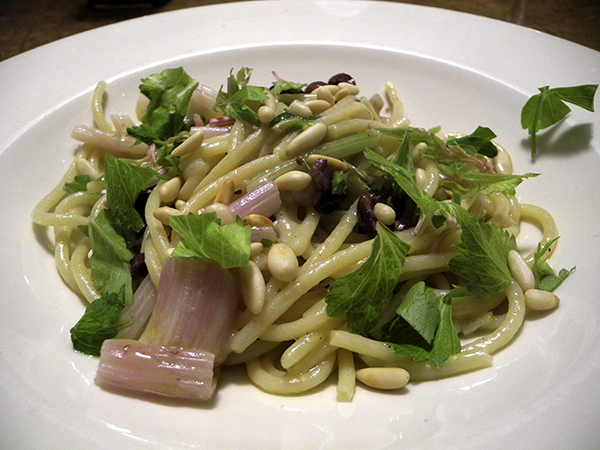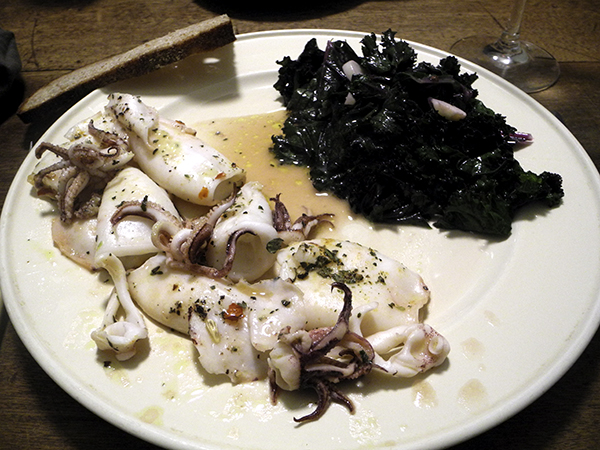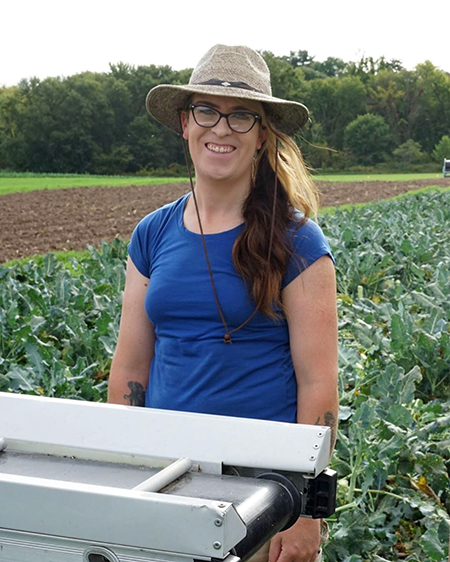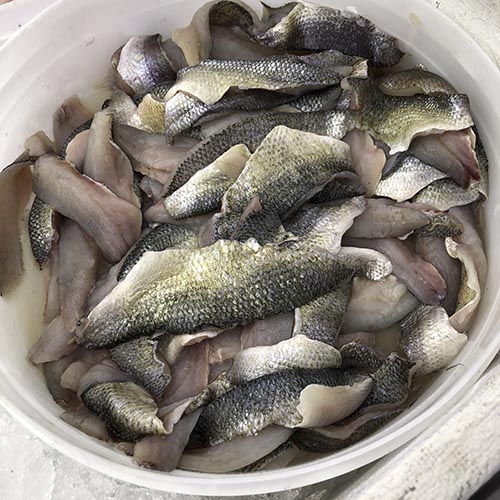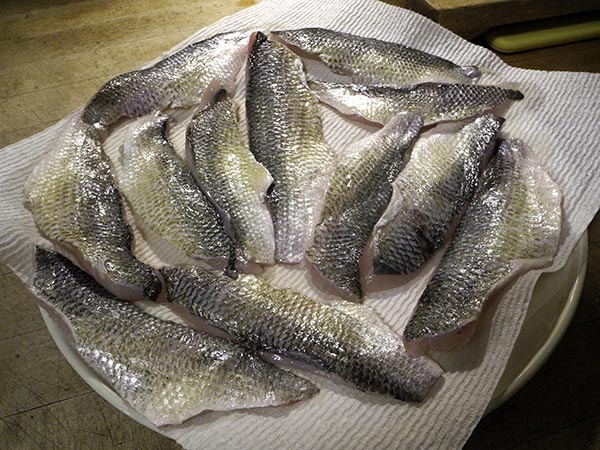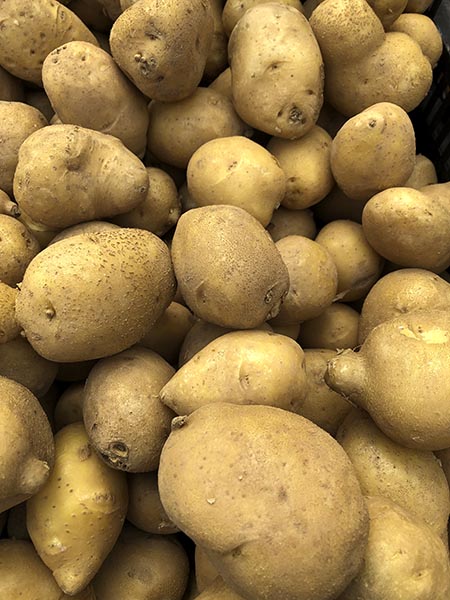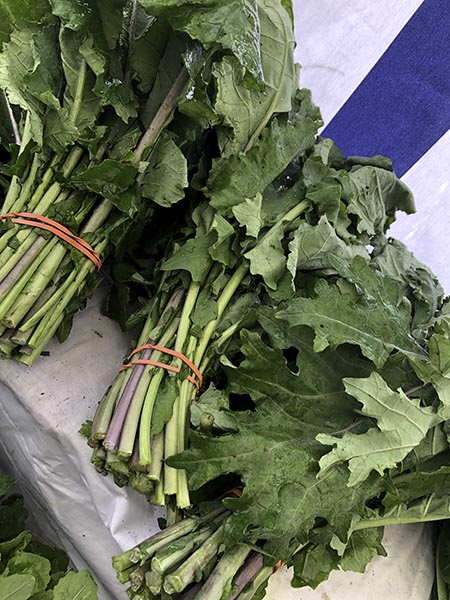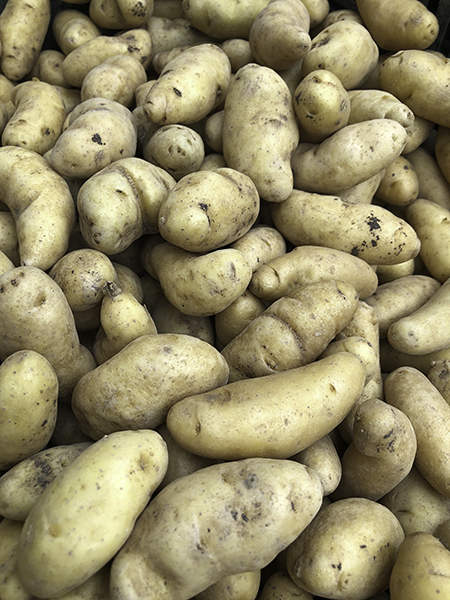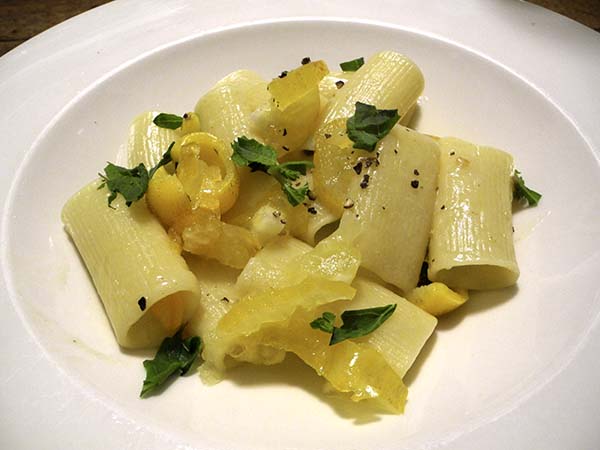
It was delicious. but we we both got a pepper scare with our initial bites: The little yellow capsicum had been described as sweet and juicy (“citrusy sweet’, the sign said), and I neither heard nor saw any mention of heat, so when I was looking around for something to add to a good artisanal pasta last night I zeroed in on these little ones.
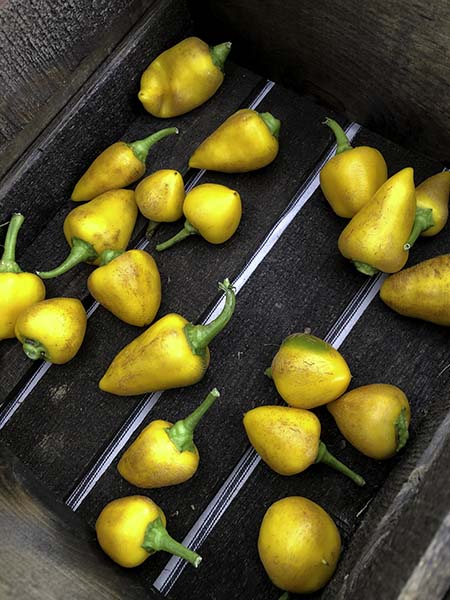
For one reason or another, the capsaicinoids soon became much less of a problem than our first taste had suggested they would be. Introducing some good bread to the table relieved the pressure initially, and we were able to sit back and enjoy the dish – and taste a good wine.
- half a dozen garlic scapes from Norwich Meadows Farm, sliced into one-inch sections, heated over a moderate flame in a little olive oil inside a large antique copper pot before adding 8 or 9 sliced ‘Bon Bon’ peppers from Campo Rosso Farm, sautéeing them until they had softened and begun to caramelize, adding one thinly sliced fresh habanada pepper near the end of that time, also from Campo Rosso Farm, and then stirring in the green section of a scallion stem from Alex’s Tomato Farm in Chelsea’s Down to Earth Farmers Market on 23rd Street, and tossing in 9 ounces of very good Campania pasta, cooked al dente (Afeltra 100% Grano Italiano Biologico Pasta di Grannano IG.P. Artigianale rigatone from Eataly Flatiron) with almost a cup of pasta water, the mix stirred over a high flame until the liquid had emulsified, one chopped yellow heirloom tomato from Norwich Meadows Farm and some chopped epazote from TransGenerational Farm mixed in, the dish arranged inside shallow bowls, a little olive oil drizzled around the edges, and more epazote sprinkled on top
- slices of an extraordinarily fine loaf of bread, ‘Seedy Grains’ (wheat, spelt, rye, and barley organic bread flours; buckwheat; oats; flax sesame, sunflower, and pumpkin seeds; water, and salt) from Lost Bread Company
- the wine was a California (grapes from both Suisun Valley and Sonoma) rosé, Evangelos Bagias Three Graces Rosé of Pinot Noir 2018, from Naked Wines
- the music was Charpentier’s 1688 tragédie en musique, ‘David et Jonathas’, William Christie conducting the Choir and Orchestra of Les Arts Florissants
